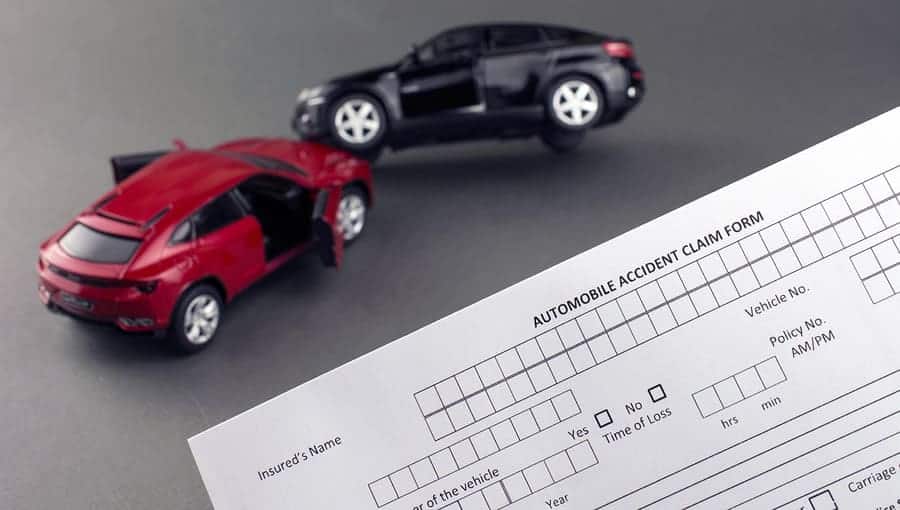Car accidents are, unfortunately, a part of life. In the United States, a crash occurs every 6 minutes. Many of these accidents result in injuries and death. In 2020, 4.8 million people sought medical treatment for car accident injuries at a cost of $473.2 billion. The monetary losses that people incur from collisions are often substantial. Car accident victims need to know their rights and the types of compensation that may be available to them.
Find out the maximum compensation you could receive.
In this article, we will explore some factors that influence how car accident settlements are calculated. We will conclude by looking at the percentage of above average car accident settlements – claims that settle for more than the victim’s actual damages.
How Car Accident Settlements are Calculated
Understanding how car accident settlements are calculated is more useful to car accident victims than looking at average car accident settlement amounts. The reason is that every car accident and case is different. Victims incur varying degrees of losses. For instance, one victim might have minor property damage while another sustains significant injuries. The first victim will clearly be offered a lower car accident settlement amount than the injured victim.
And this makes sense since car accident settlements are intended to cover the losses that a victim incurred and make them whole. While every victim incurs different types and amounts of losses, there are some types of damages that are commonly included in car accident settlements.
Damages Incurred
Some losses that are commonly incurred and factor into calculating car accident settlement amounts include:
- Medical expenses
- Lost wages
- Property damages
- Pain and suffering
- Emotional distress
The first three are easy to calculate. The victim can provide copies of medical bills, pay stubs, and repair bills to the insurance company or court, should the case proceed to litigation. But pain and suffering and emotional distress fall into a different category of losses that are known as non-economic damages. These are damages that are not easy to document.
Pain and suffering is the physical and emotional trauma that car accident victims experience. At trial, experts will attempt to quantify the extent of the victim’s suffering. But insurance companies need a simpler method of calculating losses. Some insurance companies will total up medical bills, lost wages, and property damage bills and multiply that by a number between 1.5 and 4 depending on the severity of the accident to determine your total damage award.
But realize that non-economic damages like pain and suffering is highly subjective. This is one time when hiring a car accident lawyer can be beneficial – they can make a much more convincing case to the insurance company or court for a higher award than most people trying to negotiate their car accident settlement alone.
State Car Accident Laws
The location of the accident determines which state’s car accident laws apply. For example, if you live in New Jersey but get in a car accident in New York, New York’s laws will apply. State laws can differ significantly depending on whether they have adopted fault or no-fault-based systems.
In a fault-based system, also known as a “tort” system, one party is held liable for the accident and is responsible for paying for any damages or injuries that result from the accident. The party that is determined to be at fault is usually the one who caused the accident due to their negligence or wrongdoing.
In a no-fault system, each party’s own insurance company is responsible for paying for their own damages and injuries, regardless of who is determined to be at fault for the accident. This means that the injured party will not have to prove that the other party was negligent to receive compensation for their injuries.
Since in fault-based states the driver at fault is responsible for losses, there tend to be far more car accident settlements in these states. No-fault car accident laws are intended to make the process of handling car accident claims more efficient and to reduce litigation. However, no-fault systems often have limits on the amount of car accident compensation that can be received and may not fully compensate victims for their losses. Once the coverage has been exhausted, then the victim can seek compensation from the other driver or her insurance.
Twelve states and Puerto Rico have no-fault car accident laws. The remaining states have fault-based systems. To learn more about the car accident laws in your state, check out Lawsuit Info Center’s comprehensive guide to car accident laws by state.
Fault Determinations
When fault is clear, the at-fault party’s insurance company will typically offer a settlement to avoid litigation. But if fault is uncertain, the insurance company may offer a low-ball settlement or refuse to settle at all. If both parties were at-fault, liability determinations can have a significant impact on the amount of compensation received.

Again, state car accident laws come into play. Some states follow the principle of contributory negligence while others have adopted comparative negligence. In contributory negligence states, even if a driver is only slightly at fault for the accident, they are not entitled to compensation from the other party. In pure comparative negligence states, drivers can still receive compensation for their losses even if they are mostly at fault. But their damage award will be reduced by their degree of fault.
In modified comparative negligence states, a driver can only receive compensation if they are not more than 50% at fault for the accident. If they are, then their compensation will be reduced by their degree of fault. For example, suppose a driver is found to be 75% at fault for an accident. In a contributory negligence state, he cannot recover any damages. In a pure comparative negligence state, the driver will receive 25% of his total losses. In a modified comparative negligence state, the driver will not recover anything. Thus, fault determinations play a huge role in determining whether a settlement will be offered and if so, what the amount will be.
Insurance Coverage
In almost every state, drivers must carry liability insurance. Liability insurance compensates victims when the policyholder is found to be at fault for an accident. But the insurance company will only pay losses up to the policy limits. If damages exceed the amount of insurance coverage, the victim will need to sue the other driver personally. Recovery at this point often comes down to whether the other driver has any assets that can be seized or sold to satisfy a potential judgment.
Thus, given the uncertainty of litigation and the difficulty associated with receiving compensation directly from the at-fault driver, if an insurance company offers a settlement up to the policy limits, it may not be worthwhile for the victim to file a lawsuit to seek additional compensation.
The Percentage of Cases that Settle for More Than Actual Damages
While the average car accident insurance settlement hovers around $25,000, every case is unique. Some car accidents that involve minor property damage and/or minor injuries may only settle for a fraction of the average. However, car accidents involving more substantial economic and non-economic losses may settle for significantly more than the average.
But a good car accident settlement is one that fully covers your economic losses including your medical bills, lost wages, and property damages. It also compensates you for your non-economic losses – the pain and suffering that you have experienced as a result of the accident. An experienced car accident lawyer can help you to evaluate your case and help you to receive the compensation that you deserve.


